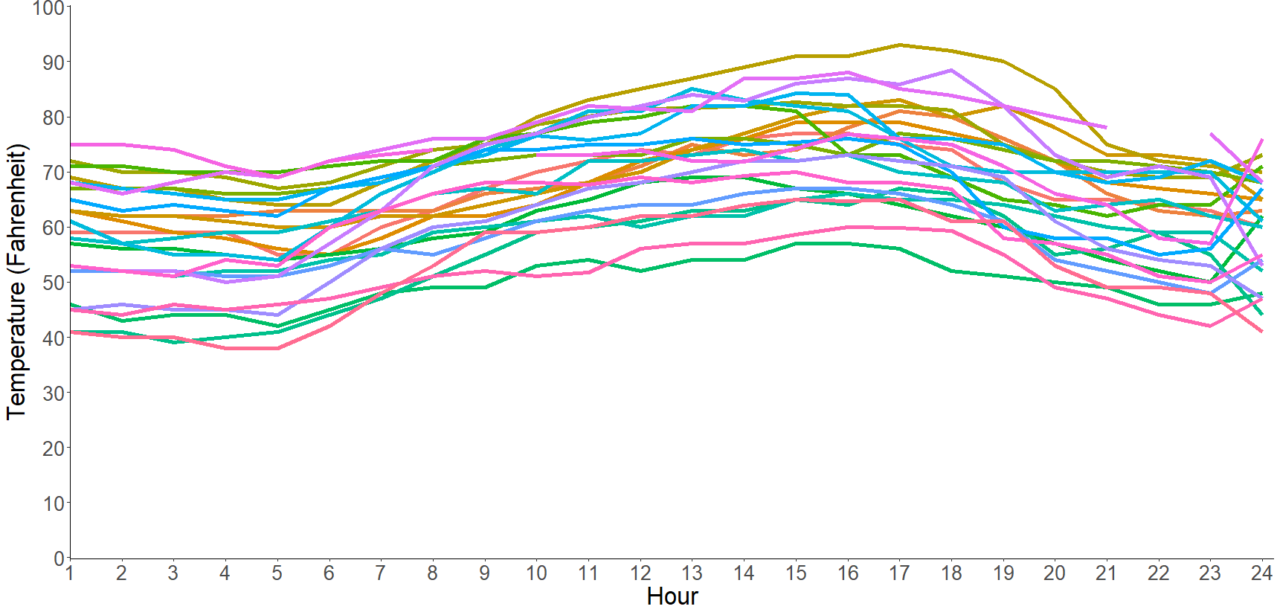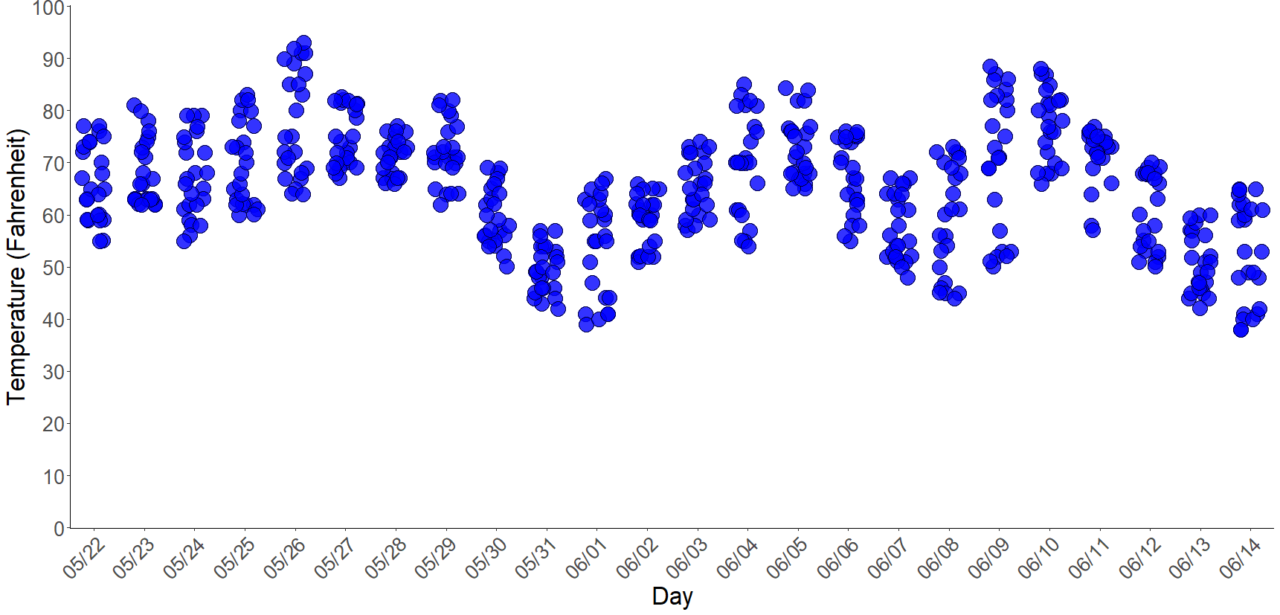What does the weather data look like?
September 18, 2020
Weather is important to understand when studying birds because it can potentially affect how they behave. The Hawk Happenings community recognized this and specifically included weather in their research question, theorizing that Red-tailed Hawk behaviors at the nest might vary with changes in the weather.
After data collection ended in June, we reached out to the closest weather station, located at the Cornell Apple Orchards . The weather station recorded the hourly average temperature, but there were gaps in the data due to technological malfunctions. To supplement that dataset, we also obtained data from the next nearest weather station at the Ithaca Airport, where temperature was recorded right before the top of every hour.
We’ve created interactive visualizations that link the behavioral data to the weather data (for example how vocalizations relate to temperature), but wanted to also provide visualizations of the weather data itself. Looking at how much the temperature varies by hour, by day, and understanding the frequency of certain temperatures will help us better understand what’s going on and to inform our interpretations.
Hourly temperature
 Figure 1. The temperature, in degrees Fahrenheit, is shown on the vertical axis and the hour of the day advances from 1:00 to 24:00 (i.e. 12:00 A.M.) on the horizontal axis. Each day is represented by each individually colored line.
Figure 1. The temperature, in degrees Fahrenheit, is shown on the vertical axis and the hour of the day advances from 1:00 to 24:00 (i.e. 12:00 A.M.) on the horizontal axis. Each day is represented by each individually colored line.Daily temperature
 Figure 2. The temperature, in degrees Fahrenheit, is shown on the vertical axis and the day of data collection advances from May 22 to June 14 on the horizontal axis. Each dot corresponds to the temperature reading associated with each hour that day.
Figure 2. The temperature, in degrees Fahrenheit, is shown on the vertical axis and the day of data collection advances from May 22 to June 14 on the horizontal axis. Each dot corresponds to the temperature reading associated with each hour that day.Temperature frequency
 Figure 3. The frequency of each temperature, in degrees Fahrenheit, during the data collection period. Frequency, or how many times the temperature was recorded, is on the vertical axis and temperature increases on the horizontal axis from 38 to 93 degrees Fahrenheit.
Figure 3. The frequency of each temperature, in degrees Fahrenheit, during the data collection period. Frequency, or how many times the temperature was recorded, is on the vertical axis and temperature increases on the horizontal axis from 38 to 93 degrees Fahrenheit.What are your thoughts after looking at these visualizations? Do you have any ideas or questions about how we are looking at weather? Should we consider another variable or is temperature a good one to use?
Please share your thoughts in the forum below!